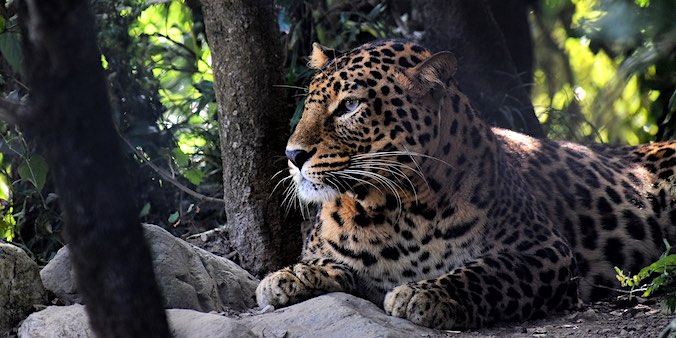KUMAON VILLAGE & MOUNTAIN WALKS
Walking tour - 17 days
KUMAON VILLAGE & MOUNTAIN WALKS
Walking tour - 17 days
About UTTARAKHAND
Uttarakhand is a state blessed with an enormous diversity of cultures and landscapes. Just like Himachal Pradesh, Sikkim, Bhutan and Arunachal Pradesh, it spans the whole altitudinal range from steamy jungle where tigers and wild elephants roam to some of the highest peaks of the Himalayas. One of them is Nanda Devi (7816 m, 25,636 ft), the highest mountain that lies fully in India.
TREKKERS’ PARADISEThe higher reaches of the Uttarakhand Himalayas are a mecca for trekkers. You can follow the herders up to the high bughyals (alpine meadows) and trek up to passes that in the old days gave access to Tibet. They reward you with some of the best glacial vistas in the Himalayas. Although the number of Indian trekkers is increasing, these areas still don’t get that many visitors as the much more known treks of Ladakh and Himachal Pradesh.
Read more…Read less
Wildlife enthusiasts find a treasure trove of biodiversity here, partly protected in national parks and wildlife reserves throughout the state. Most notably, Jim Corbett National Park and Nanda Devi & Valley of Flowers National Park. Jim Corbett National Park is named after A famous British hunter-turned-conservationist. It is well known and popular as it is one of the tiger parks in India that is easiest to reach from Delhi. Apart from being home to a wide array of mammals, birds and plant life, it has very appealing landscapes and a well-laid out infrastructure of jeep trails. Nanda Devi & Valley of Flowers National Parks are two formerly separated but now joined protected areas lying almost completely at or higher than 3500m (11.500 ft). They can be explored only on foot.
HINDU PILGRIMAGETo Hindus – who make up 83% of the state’s population – the higher reaches of Uttarakhand are known as Dev Bhoomi – the abode of the gods. This is not just folklore, as present day Hindu culture finds many of its roots in this area. It is believed that the sage Vyasa scripted the Hindu epic Mahabharata here. In the Middle Ages, the Hindu kingdoms of Garwhal and Kumaon made up the western and eastern part of the present day state, respectively.
Millions flock every year to the many pilgrim sites that the state harbors. Easily accessible places like Rishikesh, Haridwar are not only popular with Hindu pilgrims but also host numerous ashrams and yoga schools that cater mainly to foreign visitors. Much higher up, you can witness die-hard Hindu pilgrims and saddhus dipping themselves in ice-cold waters where Mother Ganga (Ganges) emerges from the mouth of a glacier.
BREATHTAKING VIEWS, COZY RETREATSTraveling by car, you may experience Uttarakhand as a never-ending series of curves and switchbacks, but after each of these bends new views and sights await you. The mountains are covered in forests and green fields and especially in the winter months you get breathtaking views of the snow-clad Himalayas on the border with Tibet (China). Uttarakhand counts numerous so-called hill stations, towns situated at medium elevation levels that have been welcoming tourist since the British era. These hill stations are popular with domestic tourists, but have a lot to offer to ‘foreigners’ as well. In and around them, you can find (with some effort) hidden lodges, boutique hotels and family-run retreats with a high degree of the ‘Hotel California factor’: you can check in any time, but you may never want to leave.
Region
Uttarakhand
(India)
Best Time
Oct-Nov &
March-April
No. Of Days
17 days
Trip Character
Walking tour
Sleeping Altitude
1430 - 3100 m
Price
INR XXX/ $ XXX
ABOUT THIS TOUR
On this tour, you’ll travel by train and car from Delhi to the Kumaon Himalayas in the state of Uttarakhand. You’ll spend eight days walking in the mountains between 1500 and 3100m whereby you’ll get a caleidoscopisch picture of the Kumaoni landscape. The mountains, the forests and streams, the Kumaoni villages and temples. You’ll experience the Kumaoni hospitality as you stay in the villagers’ homes, listening to their stories while being huddled together around a warming fire.
You’ll also trek up to a tented camp on a high alpine meadows that presents a magnificent panorama of the Himalayan peaks and their glaciers. the Himalayan views. The trek up leads through splendid forests of oaks and a manifold of different rododendron trees. In spring the flowering rododendrons set the forest ablaze in shades of pink and red.
To top it up, the last days of your tour will be spent at a very secluded jungle lodge inside Jim Corbett National Park, exploring the wildlife of this magnificent park in safari jeeps and on foot.
YOUR custom-made TRIP
The tour described here, as well as the other ones on our website, are mainly meant as suggestions. We would be happy to offer you a travel proposal that fully meets your personal demands and expectations. That means that you choose where you want to go, what level of accommodation and type of transport you want and what activities you prefer.
Please let yourself be inspired by this and other trips on our website and then drop us a line (or call us) to explain your travel wishes. We will be happy to help you put together the perfect trip. You can reach us over e-mail, Messenger, Whatsapp or mobile phone.
EXTENSIONS & VARIATIONS
Apart from the tour as described here, you could consider the following add-ons and changes:
- On all tours In India we can organise one or two days sight-seeing in Delhi, either at the beginning or the end of the tour. You would be taken to Connaught Place, the center of New Delhi, the bustling beehive of Old Delhi, the Red Fort, Qutub Minar (an old minaret), The Akshardam Temple and more if you like.
- For those who want to see more of the Indian plains we can organise a one or two-day trip to Agra (site fo the Taj Mahal) or a three to five-day Golden Circle tour, taking in Delhi, Jaipur and Agra.
- Include another short trek on which you walk up to the source of the Ganges at Gaumukh near Gangotri. This can be done at the beginning or end of this tour. It adds seven days in total to the tour.
- If trekking is not your cup of tea we can show you Uttarakhand and some of the beautiful high pilgrim places by car and by doing less strenuous day walks only.
ITINERARY
-
Day 01: Delhi - Kathgodam - Poonakot (5 h train ride; 78km/ 3 h drive)
Early morning you board the Shatabdi Express to Kathgodam, a mid-sized town at the foot of the Himalayas. On arrival our guide and driver will welcome you. Then, we’ll drive up into the mountains towards Almora. The small village of Poonakot is not far from here. Here you stay in a semi-traditional Kumaoni village house. Altitude 215 → 555 → 1430m. -
Day 02: At Poonakot
Today you explore the village and get a glimpse of the way of life in the Kumaoni mountains. You visit the village shrine to understand the local religion and beliefs. You interact with the villagers and learn about their traditions and lifestyle over a cup of tea. Altitude 1430m. -
Day 03: Poonakot - Vridh Jageshwar (walking 4h)
A day hike will take you to Vridh Jageshwar. You'll walk along the streams, pass through villages and farmlands and enjoy a picnic lunch enroute. Your homestay in Jwalabanj is set amid lush forest overlooking a beautiful valley with the mighty Himalayas in the backdrop. Altitude 1430 → 2150m. -
Day 04: Trekking Vridh Jageshwar - Jageshwar - Vridh Jageshwar (trekking 14 km/ 4-5 h)
You descend over a small and steep forest trail to Jageshwar, a complex of 125 temples surrounded by Deodar forests. Dated between the 8th and 13th century, Jageshwar is among the oldest Shiva temple complexes in India and one of 12 Jyotirlingas (devotional representations of Shiva). After lunch in a local dhaba, you climb back up to your homestay via the source of the Jata Ganga, a holy contributory to the Ganges. Altitude 2150 → 1700 → 2150m. -
Day 05: Trekking Vridh Jageshwar - Kathdara (12 km/ 4 h)
We walk down to the little market town of Dhaulchina. Halfway, there are splendid views of the Himalayan peaks of Nanda Devi (7816m) and Panchachuli (6904m). Then you enter Binsar wildlife Reserve and climb up the sleepy little hamlet of Kathdara. Here, your stay is at a cosily renovated village homestay. Altitude 2150 → 1800 → 1900m. -
Day 06: Kathdara - Risal (walking 14 km/ 5 h)
We continue walking north through beautiful forests while getting regularly excellent views of the Himalayas. A wildlife guide accompanies us while we watch the birds and, with some luck, yellow-throated martens and goral (wild Himalayan goats). Overnight in another quaint little village, named Risal. Altitude 1900 → 1600 → 1950m→ 1750m. -
Day 07: Trekking Risal - Khali (walking 4 km/ 1.5 h)
Turning south a short walk brings us to the magnificent historic bungalow of Khali Estate. You will appreciate the comfortable rooms with private bathrooms here. Altitude 1750 → 1950m. -
Day 08: Khali - Saryu Valley (105 km/ 4 h)
A car takes us further north and closer to the Himalaya. For two nights we stay in a beautifully restored 19th century village house in Supi, in the remote Surya Valley. Altitude 1950 → 2080m. -
Day 09: At Saryu Valley
Today you explore the village and its surroundings, interact with the villagers and learn about their way of life. Altitude 2080m. -
Day 10: Trekking Supi – Pakhua Bugyal (10 km/ 4-5 h)
Leaving the pretty village of Supi behind, you climb over an ancient trail through alpine meadows and beautiful oak-rhododendron forests. In springtime the forests are awash with shades of pink and red as the different kinds of rododendron trees blossom. At your destination, the alpine bugyal (meadow) of Pakhua, a sweeping view of Pindar Valley with Sunderdhunga and Pindar glaciers beyond awaits you. Overnight in trekkers tents. Altitude 2080 → 3050m. -
Day 11: Trekking Pakhua Bugyal - Jaikuni Bugyal (5 km/ 2 h)
Early rising will award you with a mesmerising sunrise as the early rays of the sun light up the snow-covered peaks of the Himalayas. After breakfast, a relatively easy walk over the crest takes you to Jaikuni Bugyal. Here, you sleep in the relative comfort of spacious bungalow tents. Again, the views are jaw-dropping. Altitude 3050 → 2800 → 3100m. -
Day 12: Jaikuni Bugyal - Dhurr (12 km/ 4 h)
Descending through magnificent forest with ancient oaks, alders and chestnuts you’ll reach the isolated hamlet of Dhurr in Pindar Valley. Overnight in homestay. Altitude 3100 → 2450m. -
Day 13: Dhurr - Binsar (120 km/ 5 h)
By car you return to Bagehswar and onwards to Khali Estate in Binsar National Park. Altitude 2450 → 1950m. -
Day 14: Binsar - Corbett N.P. (135 km/ 5 h)
Today you’ll travel east, passing the garrison town of Ranikhet with its quaint British era buildings. Your destination is Jim Corbett National Park. Here you stay in an utterly atmospheric accommodation inside the park that is not reachable by car. Altitude 2450 → 550m. -
Day 15 & 16: In Jim Corbett N.P.
You’ll have two full days to explore the park or relax at the lodge, which is surrounded by jungle. Apart from jeep safaris (early morning and late afternoon) activities can be arranged, such mountain biking and guided walks that start right from the lodge. Altitude 550m. -
Day 17: Jim Corbett N.P. – Kathgodam & Train Kathgodam - Delhi
Early morning you’ll depart from Kathgodam, where you can catch the 3 PM train to Delhi. End of the tour. Altitude 400m → 550 → 215m.
HIGHLIGHTS OF THIS TOUR
KUMAONI VILLAGES
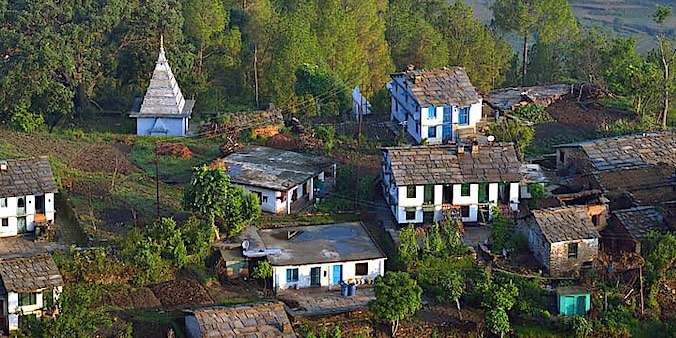
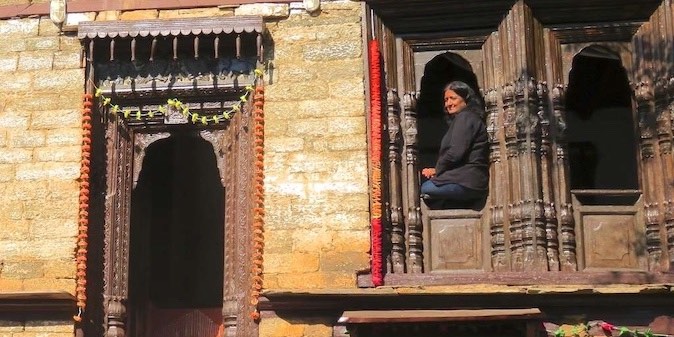
KUMAONI WOODWORK
TEMPLES OF JAGESHWAR
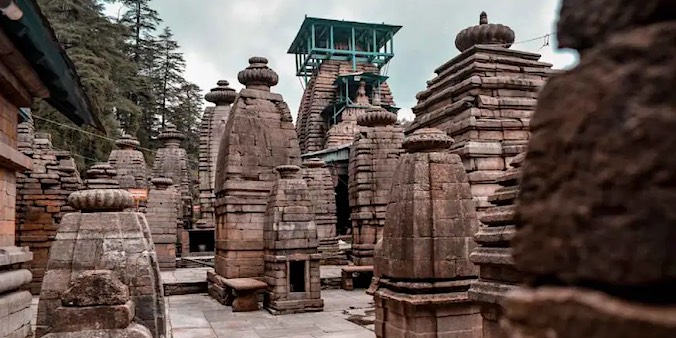
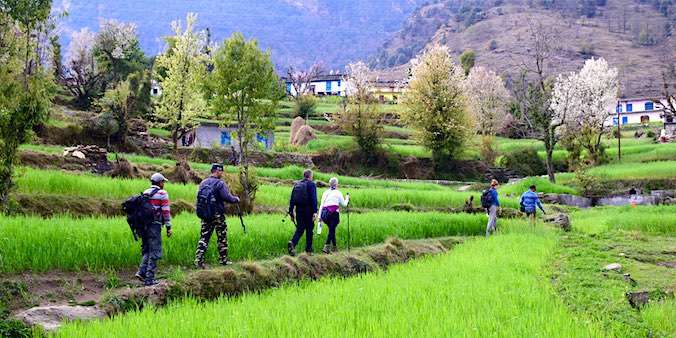
BINSAR Wildlife Sanctuary
THE BUGYALS of KUMAON

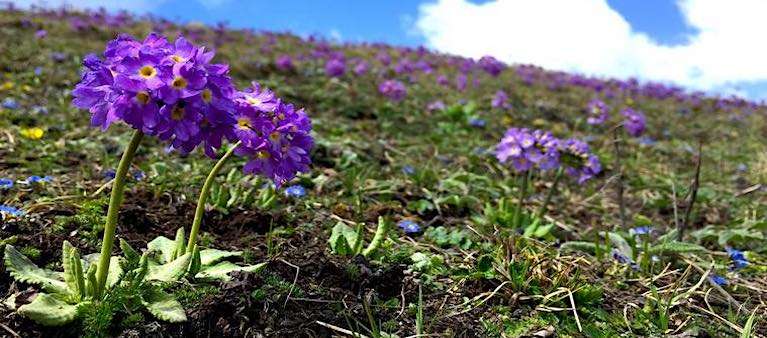
FLOWERS of the BUGYALS
JIM CORBETT N.P.
